Shopify
This article is about troubleshooting with Shopify configuration and webhooks and helps to check that webhooks are set up correctly.
Sometimes the LMS may stop receiving or processing Shopify webhooks due to issues with Webhook settings. It is important to make sure that your Shopify store uses a supported version of webhooks in the webhook notifications and in the app that sends data to LMS.
Basically, it is essential to make sure that API versions in the Webhook settings, app settings and in Shopify configuration in LMS are identical.
Usually, your Shopify configuration has been setup during your project / together with imc consulting and updates/checks below are not needed / only needed if you experience a problem with a Shopify checkout.
If you are not sure about the configuration settings or need help with (initial) configuration, please create a request ticket in our Service Desk and we will support you with the setup.
Quick Summary
To ensure the LMS receives and processes Shopify webhooks, it's crucial to verify that the API versions in the Webhook settings, app settings, and LMS Shopify configuration are consistent.
The webhook version should be the same in 3 areas:
In the Webhook settings in Shopify notifications:
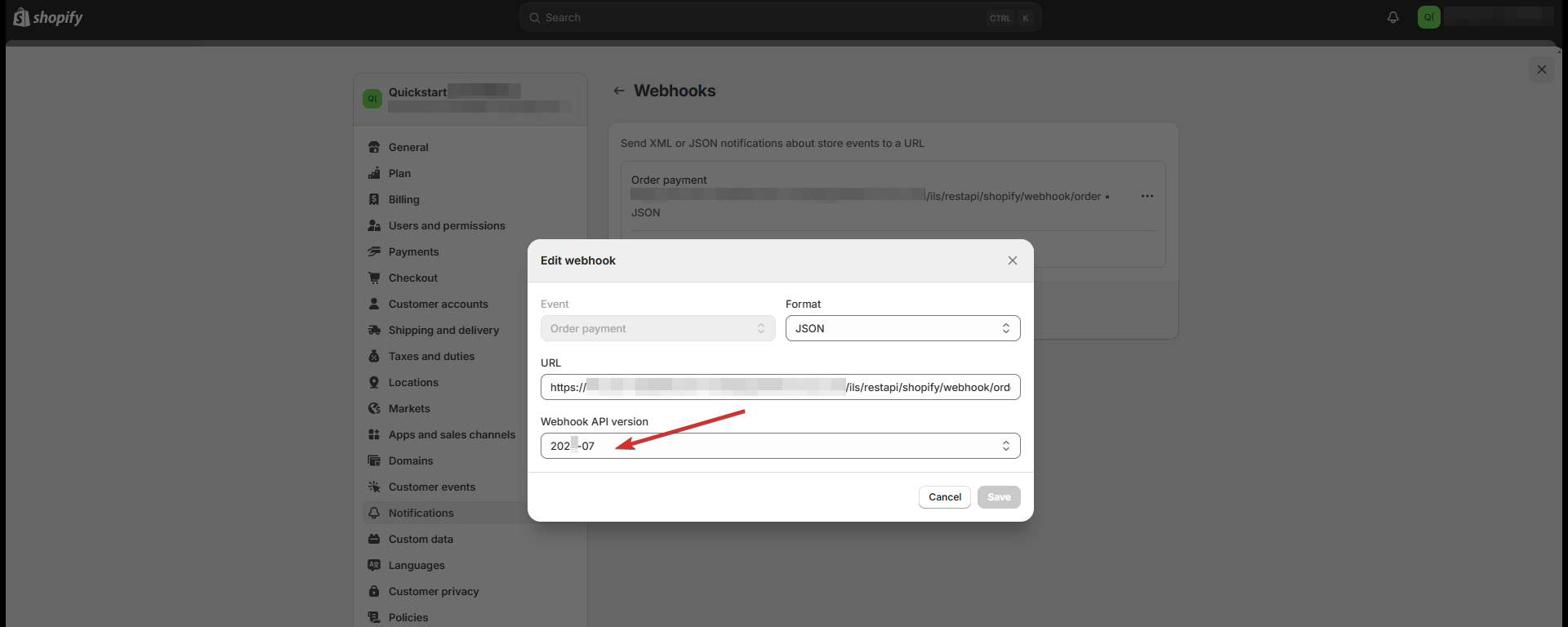
In the Admin API integration of the App (Event version):
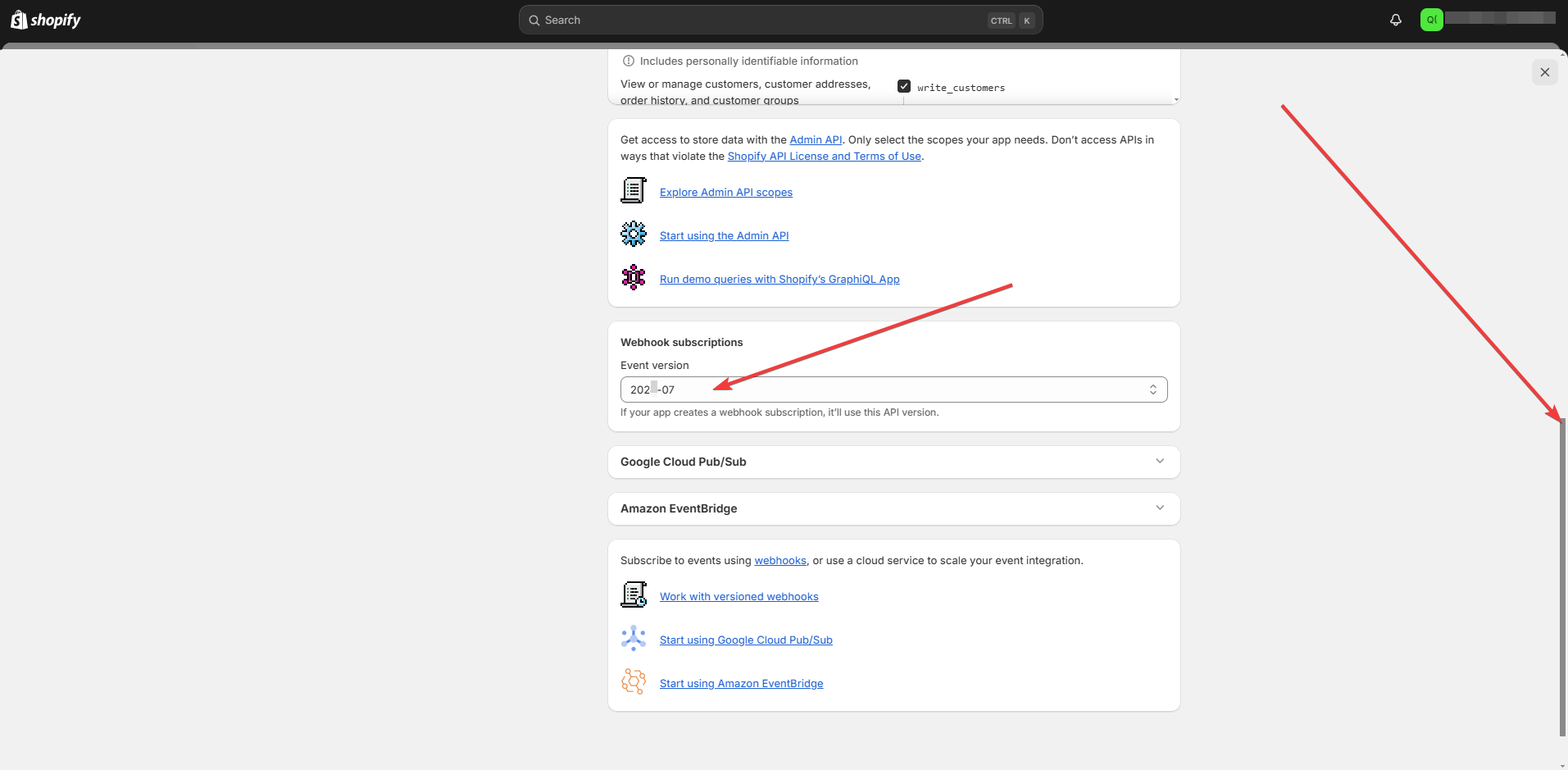
In the LMS (shopify configuration):

Additionally, the LMS should have the same webhook key
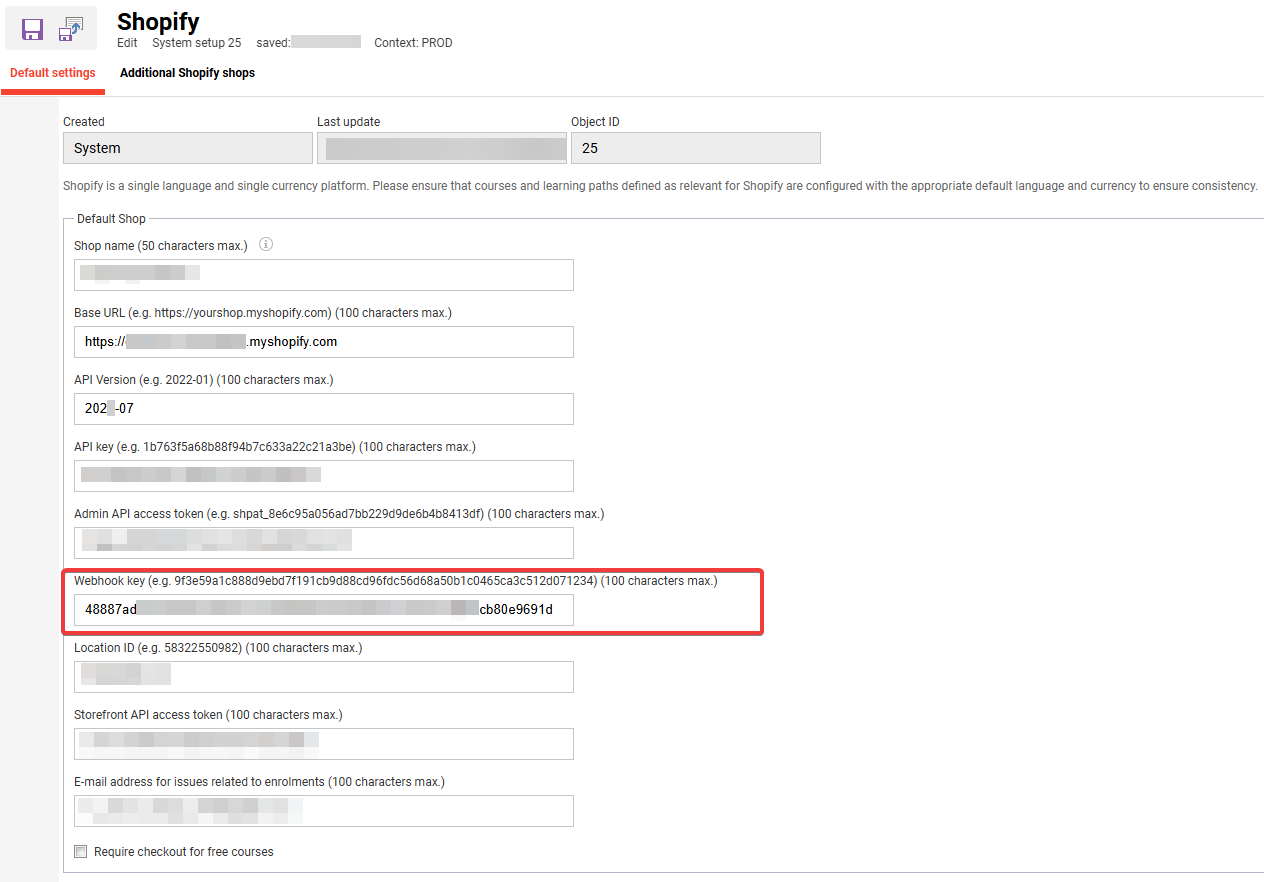
as the webhook key in your Shopify store:
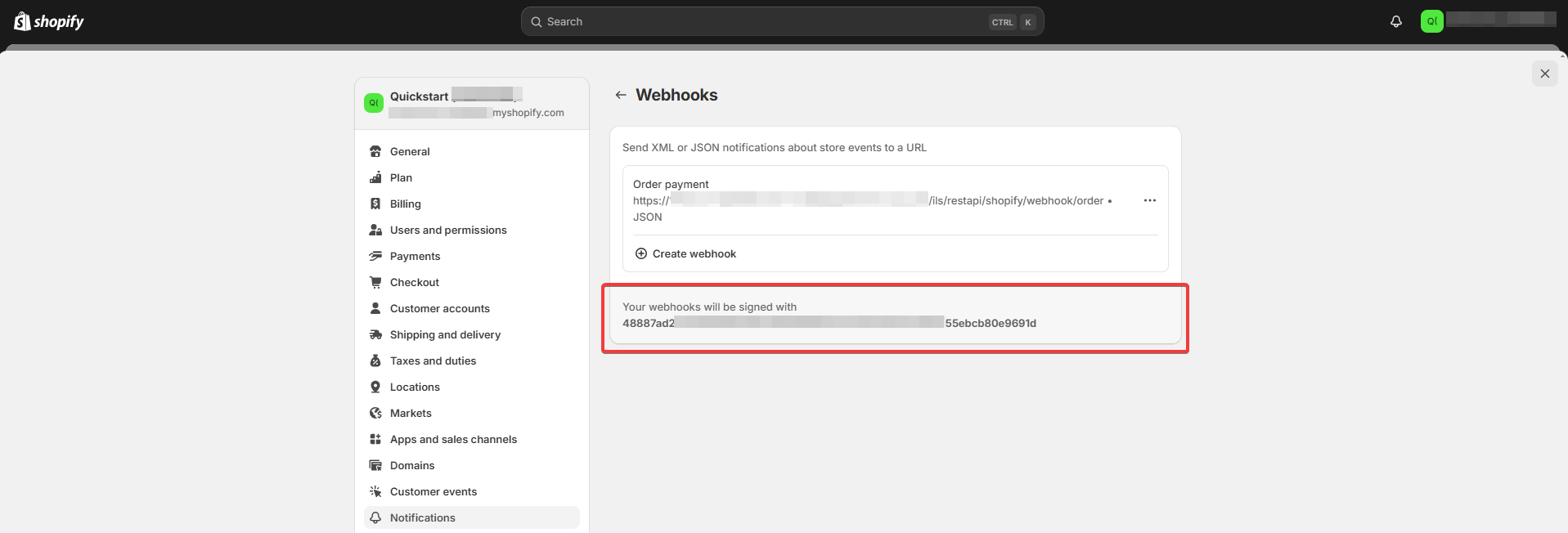
Shopify Settings and Webhooks
Login to your Shopify store and access its settings (your actual Shopify store may have changed/updated interface, you can refer to Shopify documentation in order to find out where store settings can be updated),
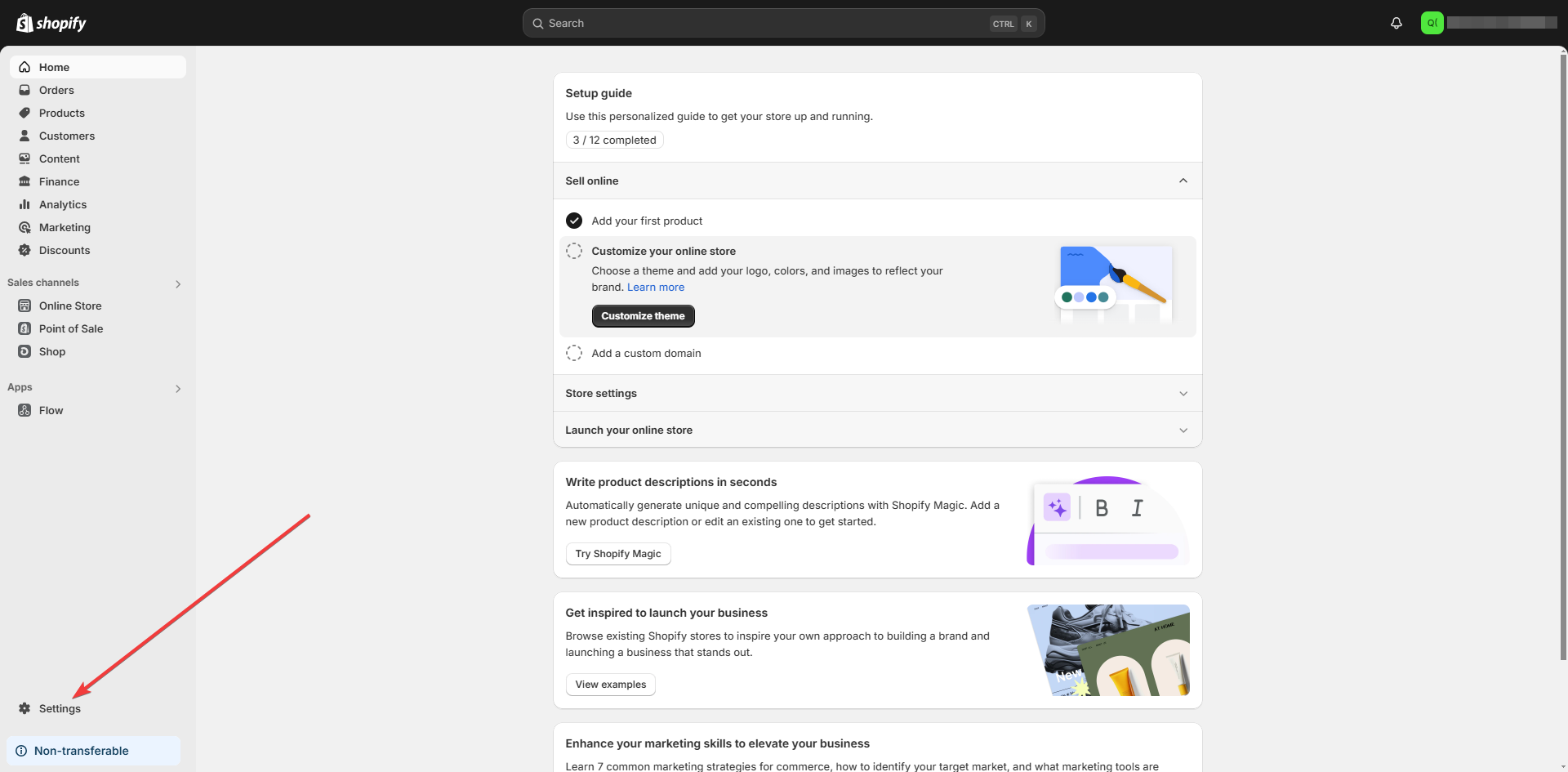
access Notifications,
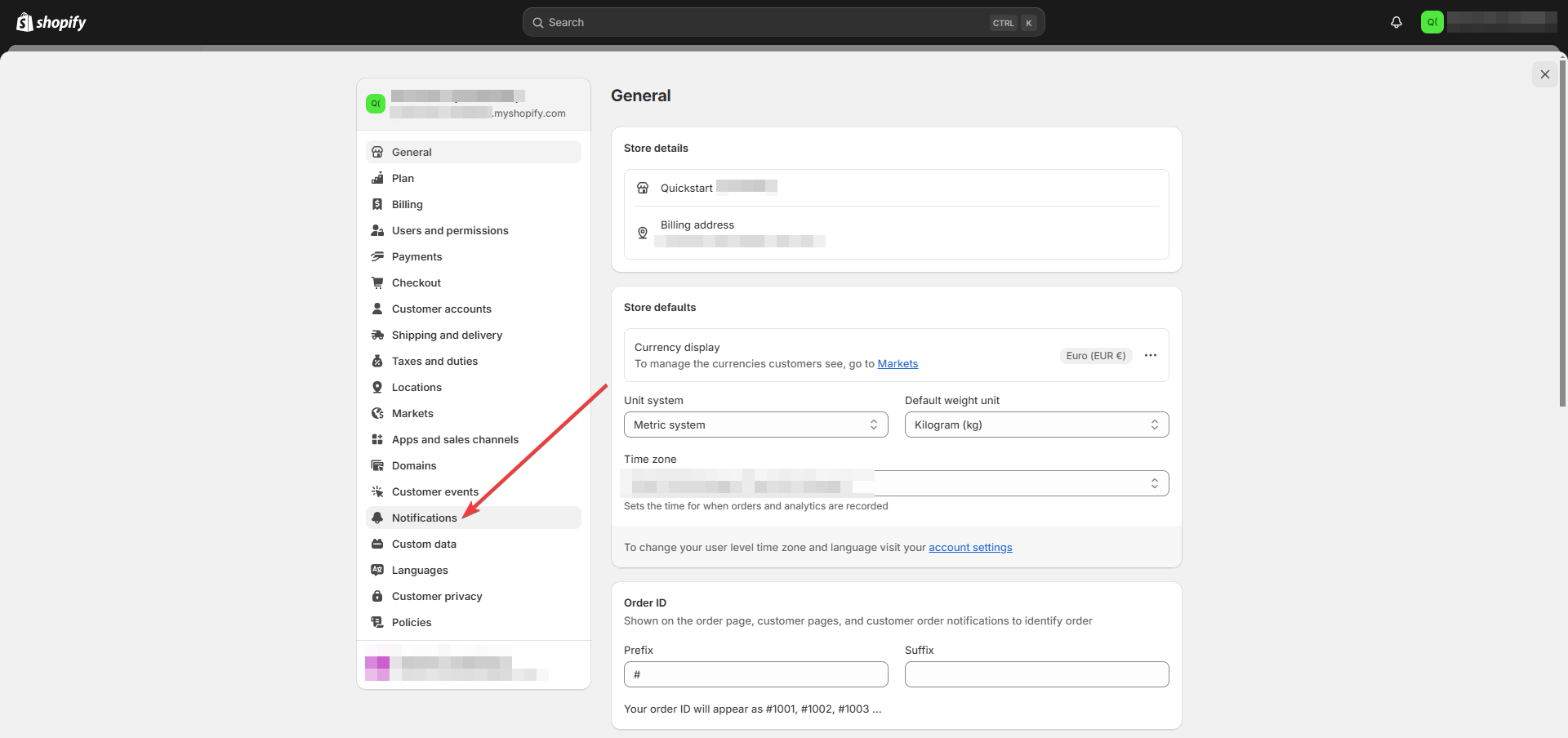
click on Webhooks
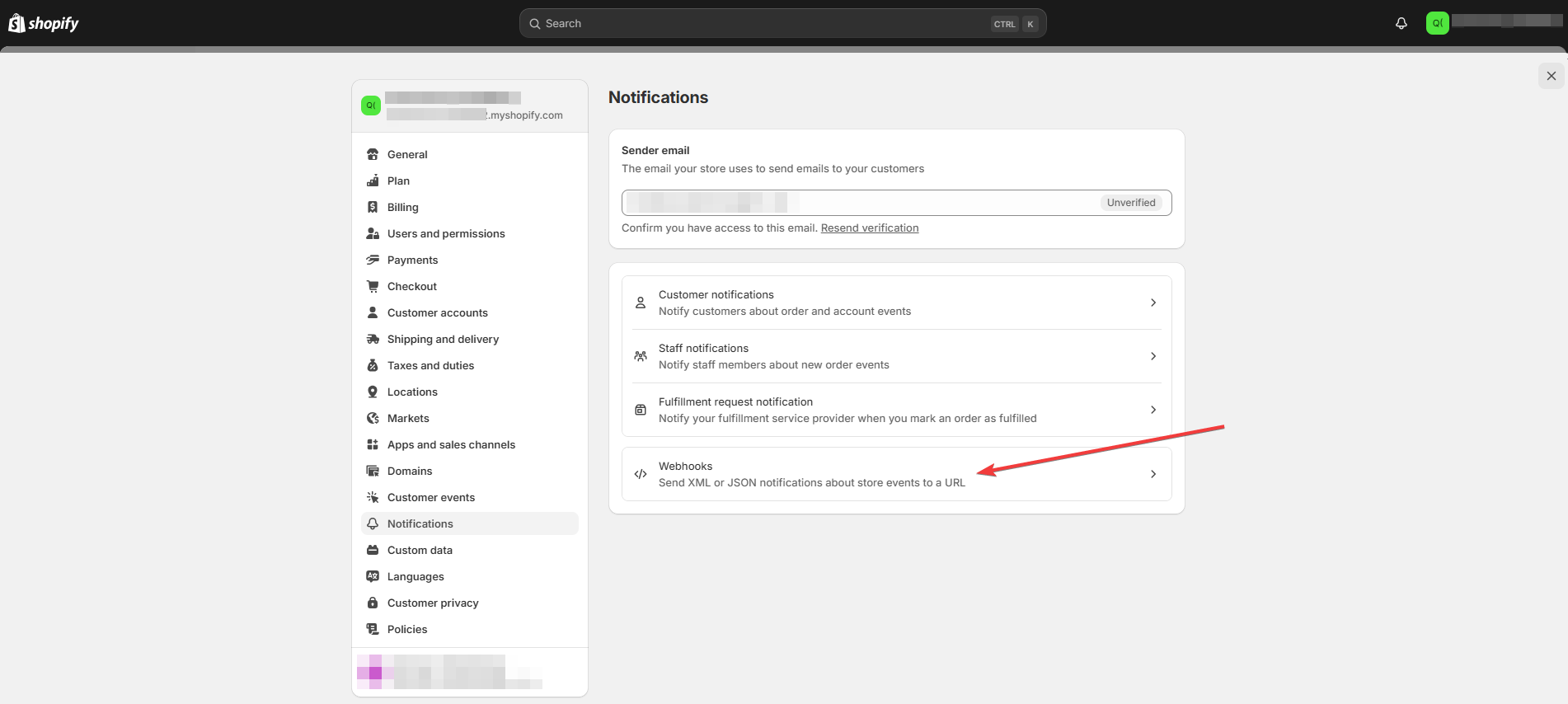
You will see an Order payment webhook that pointed to the LMS and a webhook key. We will get back to the webhook key later as we will need to make sure that the system has a correct webhook key. Your Shopify store may have several webhooks for different stores/systems. A webhook used for LMS has a link to the system and /ils/restapi/shopify/webhook/order added to the url. Note that part of the link /ils/ may look different if your system uses other context (in rare cases). Click on Three-Dots Menu and on Edit afterwards:
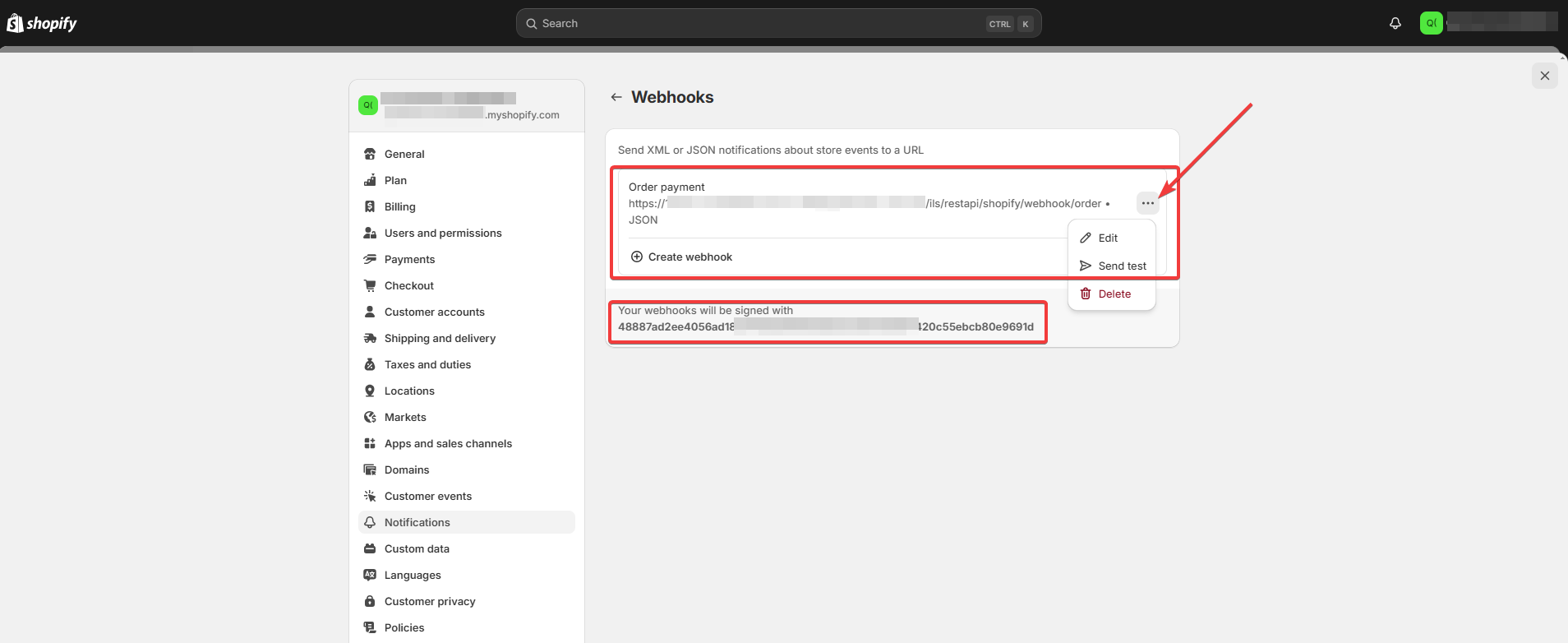
In Edit webhook window URL and Webhook API version are available. Make sure that URL is pointing to your system and check the API version. Usually, the version starts from the year. The webhooks may not be sent if old/unsupported version is set in the system, or the LMS system may not process webhooks if different Webhook API versions are configured in Shopify and LMS.
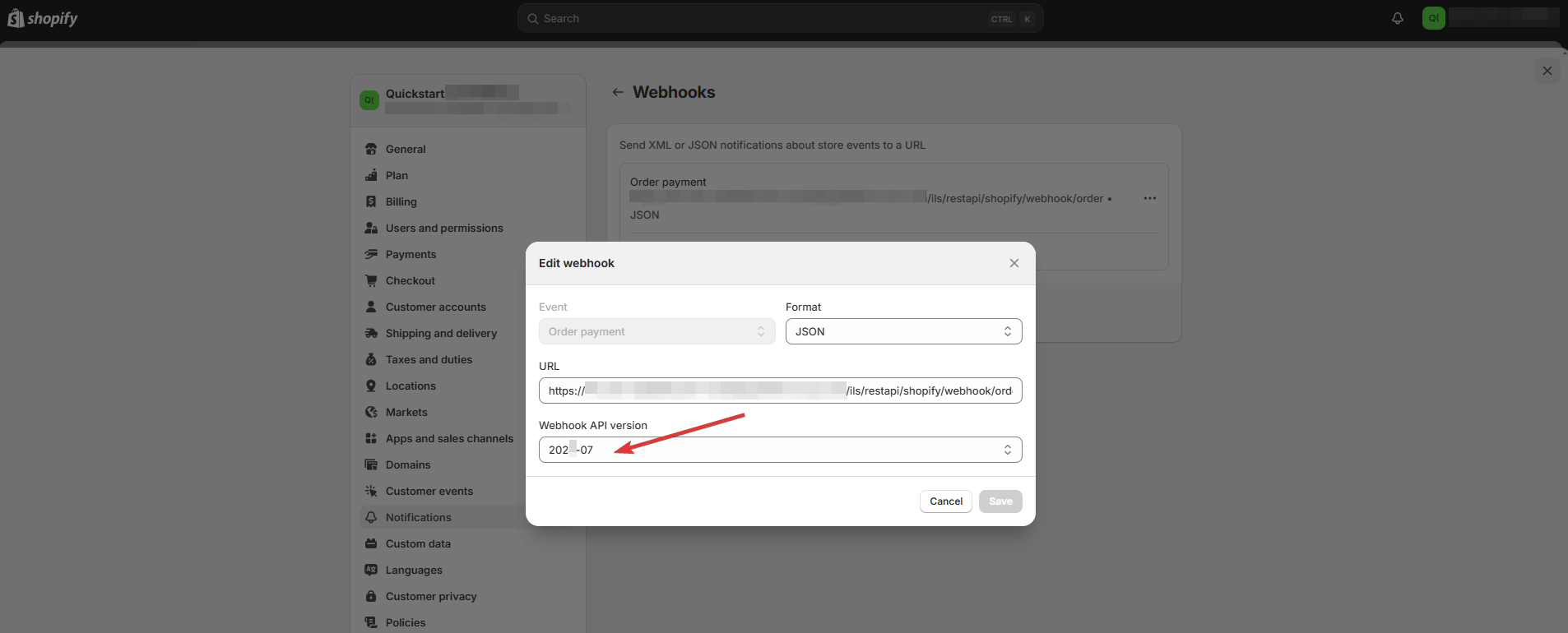
Click on the API version in order to access a list of versions. We recommend selecting a version before the latest version (if your system uses old and outdated API version). Select appropriate version and save changes.
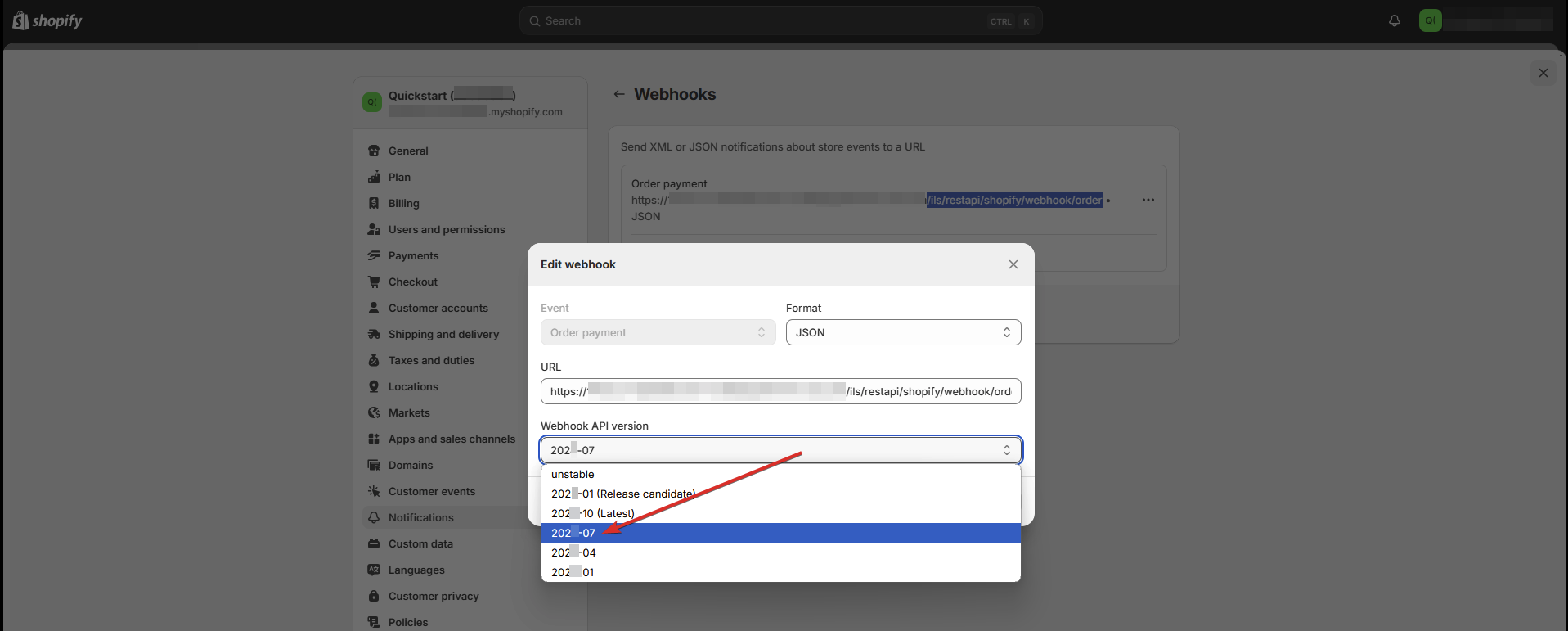
Now we should make sure that our App uses the same webhook API version as we have in the Notifications.
Go to Apps and sales channels in your Shopify store settings.
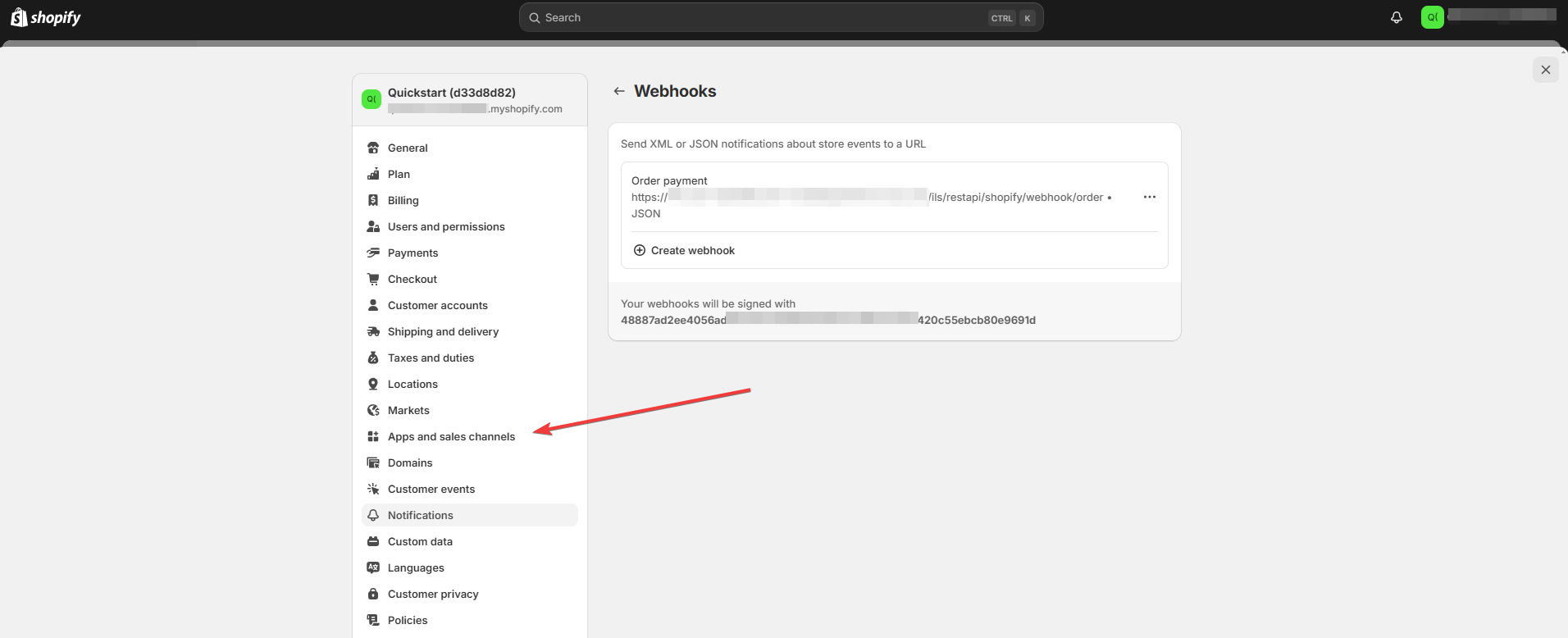
Click on Develop apps.

Click on App you are using for LMS system (in our case the App is called Imc Connector test).

Select Configuration tab.

Click on Edit in the Admin API Integration section.

Scroll down to the page. You will find the section Webhook subscriptions:
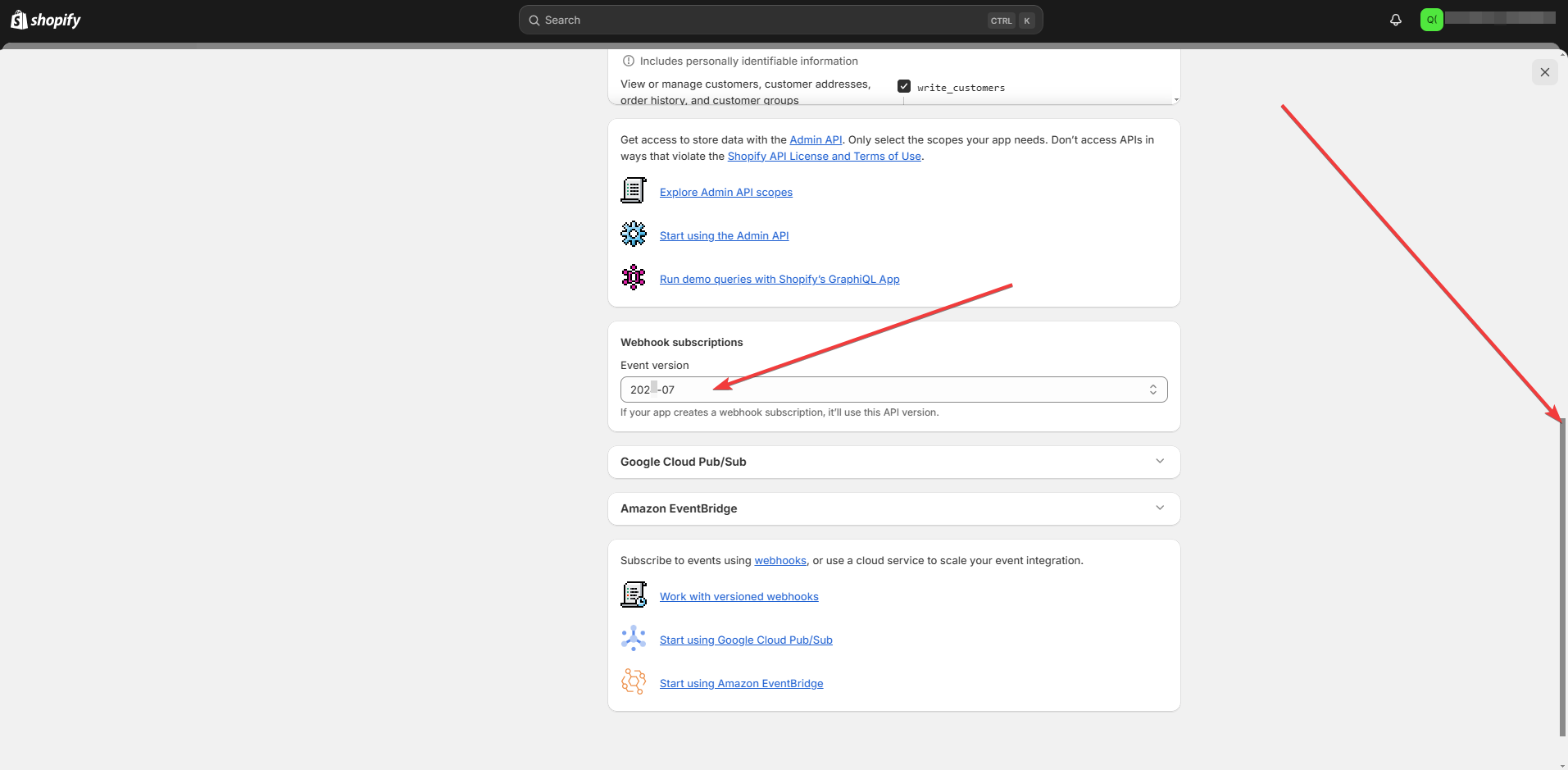
In this section the Event version should be the same as you set in the Webhook API version for the notification. Click on the list and select an appropriate version (if changes are required).
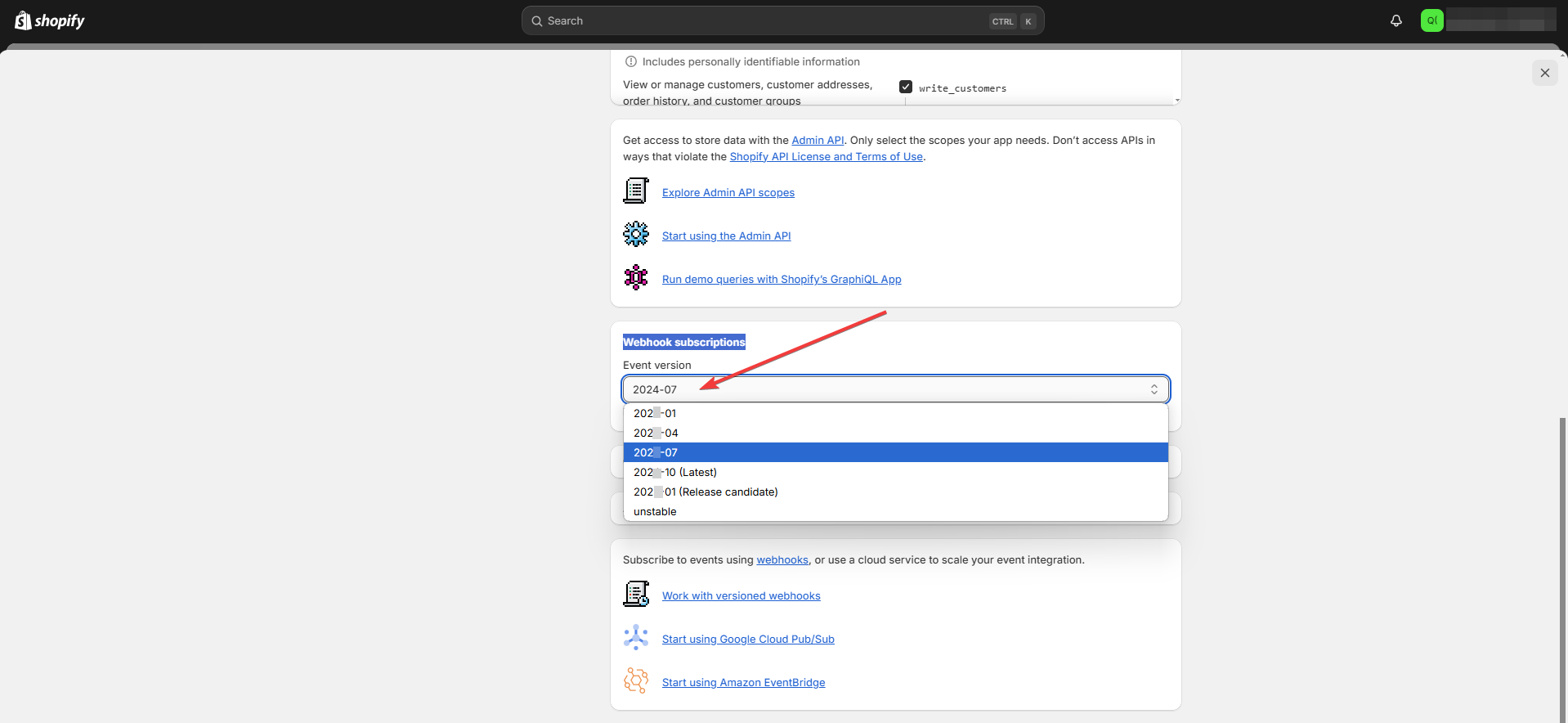
Scroll down and click Save button in order to save changes:
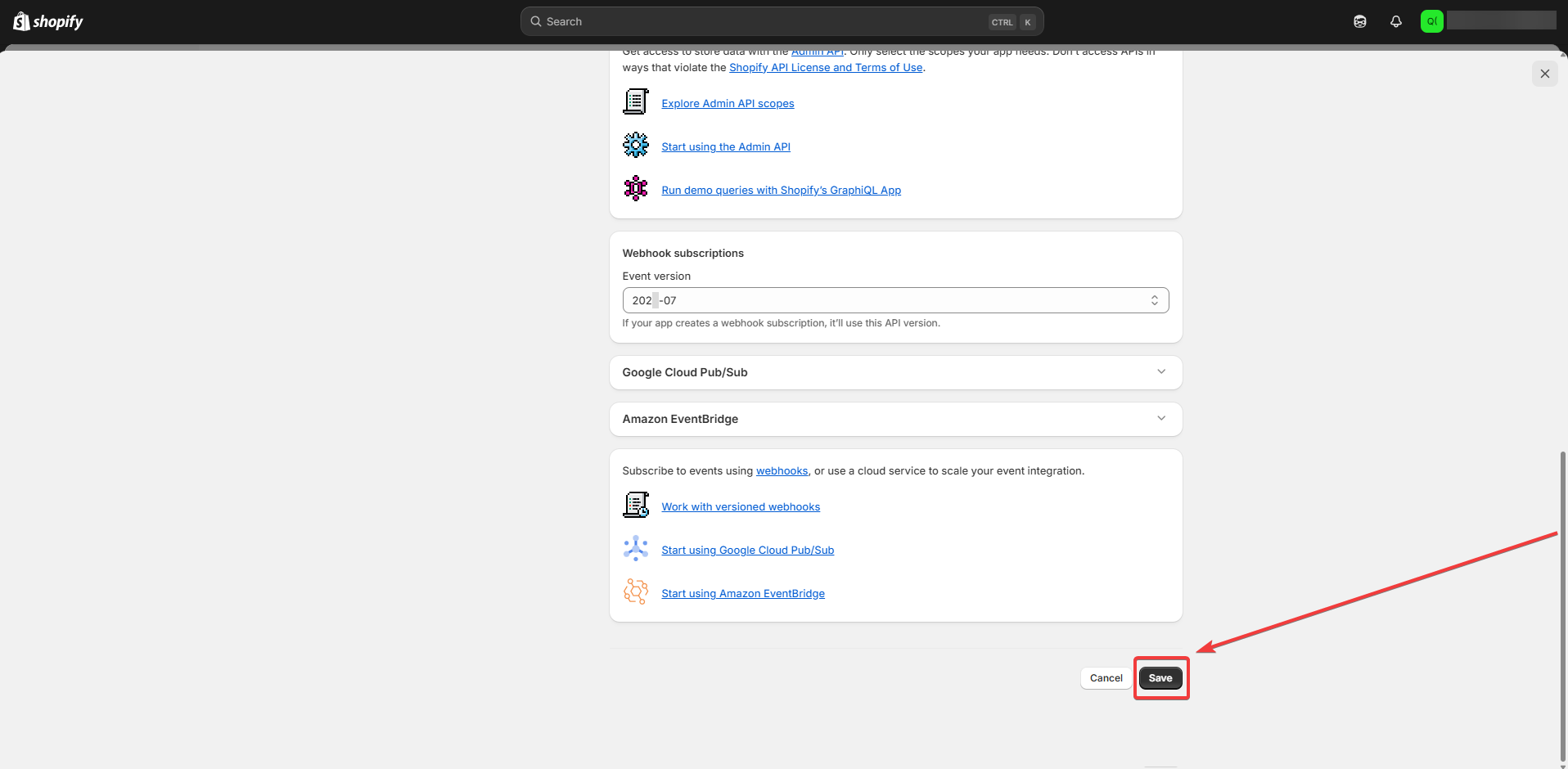
Shopify Settings in LMS
Now we need to make sure that the same API version is specified in the LMS.
Important:
Incorrect changes in the configuration may lead to failures with Shopify integration. Please perform changes only if you have appropriate level of knowledge and aware of functions of each setting you change and further consequences of your actions. Otherwise, please contact our Support team/Consulting team regarding this matter, by creating a request ticket in our Service Desk.
Login to LMS with the account that has access to configuration of the system. Go to Configuration menu, search Shopify in the configuration and click on it:

Click on Edit and select a context of your system. PROD context is used for a production/live system.

If your LMS system has multiple stores set up, you will also need to check the configuration of each store in the Additional Shopify shops tab.

Most systems have one Shopify store configured. That is why all configuration for such systems should be performed in the Default settings tab. There you will see a field API Version. The version should be the same as in the Webhook notifications and in the App Event version in the Shopify store (information about these sections is specified at the beginning of this article). Perform appropriate corrections (if needed) and save changes.
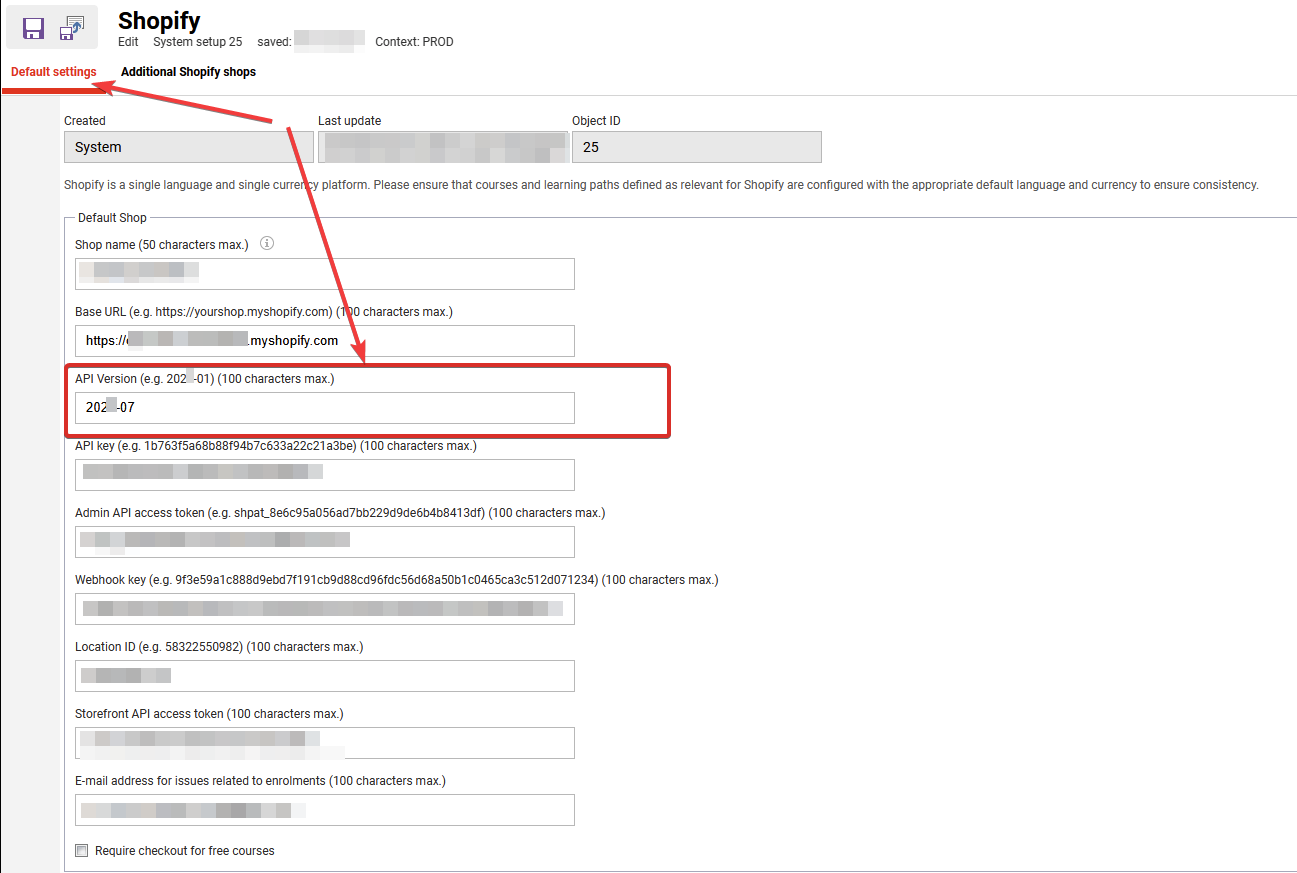
You should also make sure that the Webhook key in LMS
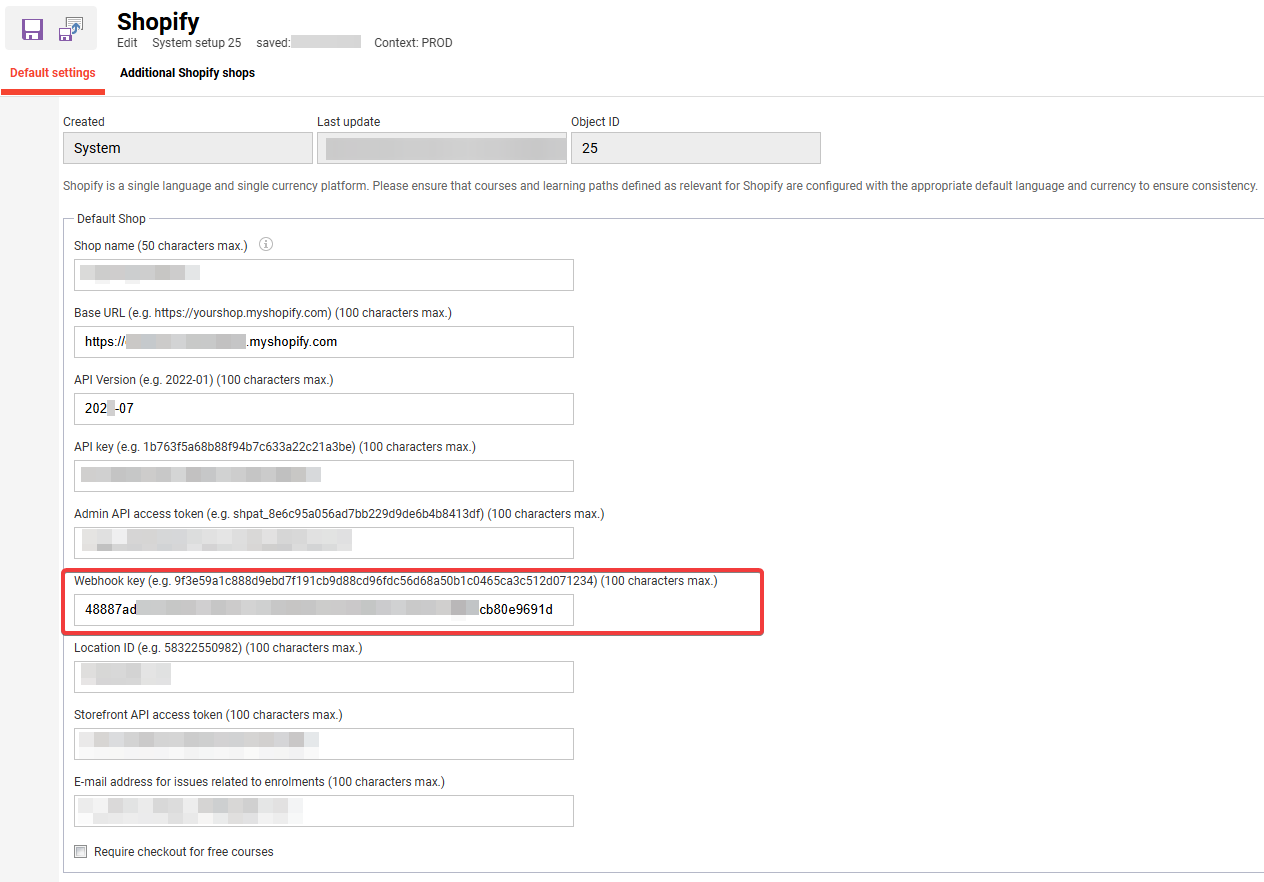
is the same as you have in the Shopify Notifications.
There should not be any empty spaces before or after a Webhook key in LMS. Sometimes empty spaces are getting copied along with the Webhook key.
This is how a webhook key looks in Shopify (information on how to access this section in Shopify can be found at the beginning of this article):
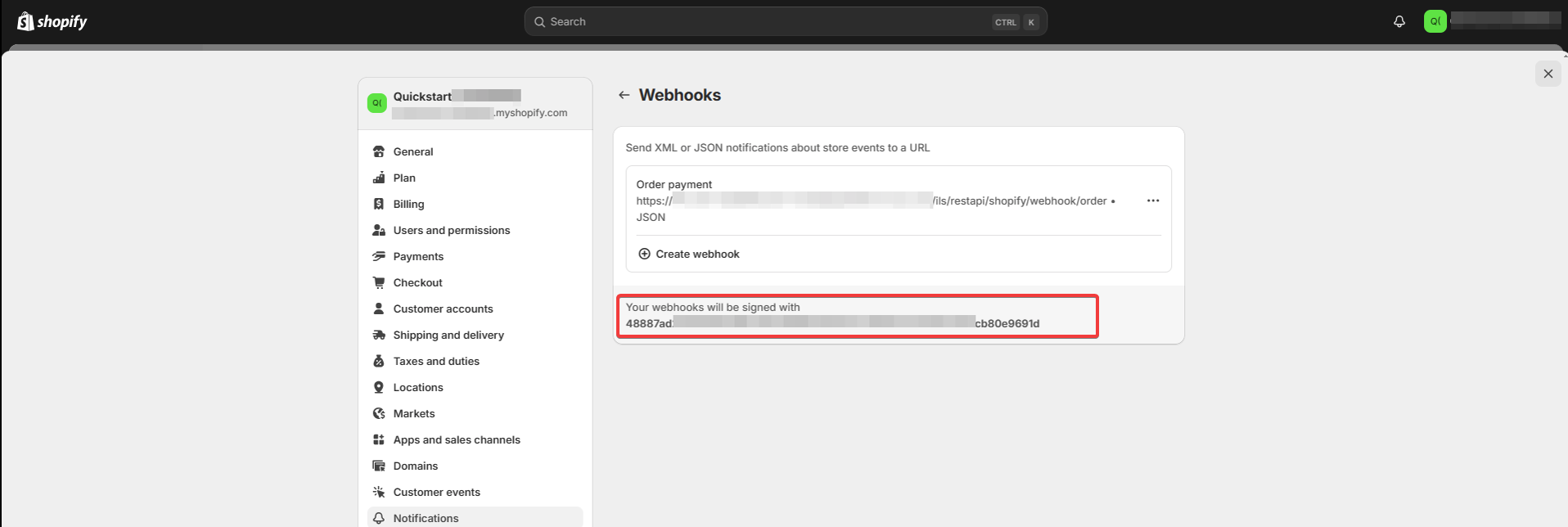
We hope that information specified in this article helped you to check API versions in Shopify and LMS, as well as helped you to make sure that both LMS and Shopify use the same webhook key.
